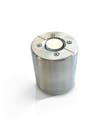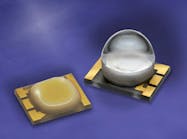Our Dual Beam Combiner merges the output of two laser diodes into a collimated, co-linear beam. To achieve this merge, we employ a polarizing beamsplitter in a reverse configuration. Two beams enter the beamsplitter and emerge as a single beam. Beam combining offers two main advantages. Merging similar wavelengths will double the power available at that wavelength. The DBC makes it possible to merge two different wavelengths, whether ultraviolet, visible, or infrared. For example, certain applications require the alignment of infrared beams. Dual beam combining allows users to mix infrared and visible wavelengths for an easy means of alignment. Additional applications include fluorescence, bioanalysis, spectroscopy, flow cytometry, interferometry, microscopy, and measurements requiring wavelength difference. Popular DBC configurations include merging the output of two 405nm 50mW laser diodes, yielding 100mW of violet output. Other users prefer combining the output of two 635nm 35mW red laser diodes or two 375nm 8mW ultraviolet diodes. In this manner, users can easily double the output power that would be available from only one diode. Most standard diode wavelengths can be combined.Our IQ series laser head is an integral part of the Dual Beam Combiner setup. The IQ head features a proprietary design that yields a high degree of centering accuracy while transferring maximum heat away from the diode. For laser drive currents under 125mA, the diode driver can be mounted internally, but higher drive currents require external LD drivers. Optional thermoelectric coolers (TECs) are available for our laser heads. TEC controllers are mounted externally.When applications require drive currents exceeding 125mA, users may consider incorporating two IQ laser diode modules in addition to the heads. IQ modules not only come complete with internal diode drivers, but each features a PID temperature controller and precision current source, helping to ensure stability of your wavelength and output.
April 7, 2025




